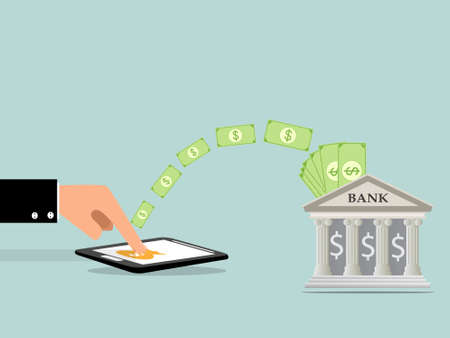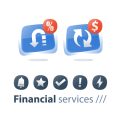1. Understanding the Student Loan Landscape in the U.S.
Before you dive into repayment strategies, it’s crucial to understand how student loans work in America. There are two main types of student loans: federal and private. Each has its own rules, benefits, and drawbacks. Here’s what you need to know:
Federal vs. Private Student Loans
| Feature | Federal Student Loans | Private Student Loans |
|---|---|---|
| Lender | U.S. Department of Education | Banks, credit unions, online lenders |
| Interest Rates | Fixed, set by Congress | Fixed or variable, based on credit score |
| Repayment Options | Many flexible plans (income-driven, deferment) | Limited flexibility, varies by lender |
| Forgiveness Programs | Yes (e.g., Public Service Loan Forgiveness) | No federal forgiveness options |
Key Terminology You Should Know
- Principal: The original amount borrowed.
- Interest: The cost you pay for borrowing money, usually a percentage of the principal.
- Grace Period: A set time after graduation before you have to start repaying your loan (typically 6 months for federal loans).
- Servicer: The company that handles billing and customer service for your loan.
How the American Student Lending System Works
The process typically starts when a student fills out the Free Application for Federal Student Aid (FAFSA). Based on this application, students may be offered federal loans as part of their financial aid package. If additional funding is needed, families often turn to private lenders.
- You borrow money each academic year.
- You don’t need to make payments while you’re enrolled at least half-time.
- After graduating or dropping below half-time enrollment, you enter a grace period.
- Your loan servicer will contact you about repayment options when it’s time to start paying back your loan.
The Big Picture
Navigating student loans can feel overwhelming, but knowing the basics—what types of loans exist, who lends them, and key terms—will help you make smarter decisions about managing and repaying your debt.
2. Federal Repayment Plans and Forgiveness Programs
Understanding Your Repayment Options
If you have federal student loans, you’re not stuck with just one way to pay them back. The U.S. Department of Education offers several repayment plans to fit different budgets and life situations. Let’s break down your main options:
Standard, Income-Driven, and Extended Repayment Plans
| Plan Type | Monthly Payment | Repayment Period | Who It’s Best For |
|---|---|---|---|
| Standard Repayment | Fixed payments (at least $50/month) | 10 years | If you can afford higher payments and want to pay off your loan quickly with less interest overall. |
| Graduated Repayment | Starts low, increases every 2 years | 10 years | If you expect your income to rise over time. |
| Extended Repayment | Fixed or graduated payments | Up to 25 years | If you need lower monthly payments and have more than $30,000 in federal loans. |
| Income-Driven Repayment (IDR) | Capped at 10-20% of discretionary income | 20–25 years, then forgiveness may apply | If you have a low income or high debt compared to your income. |
What Are Income-Driven Repayment Plans?
IDR plans adjust your monthly payment based on your earnings and family size. There are four main types: Income-Based Repayment (IBR), Pay As You Earn (PAYE), Revised Pay As You Earn (REPAYE), and Income-Contingent Repayment (ICR). If you qualify, these plans can make your monthly payments much more manageable.
Loan Forgiveness Programs: PSLF and Beyond
The government offers some paths that could wipe away your remaining balance after meeting certain requirements. Here are the most popular options:
| Forgiveness Program | Main Requirements | How Long Until Forgiven? |
|---|---|---|
| Public Service Loan Forgiveness (PSLF) | Work full-time for a qualifying employer (government or non-profit), make 120 qualifying payments under a qualifying repayment plan. | 10 years of eligible payments while working in public service. |
| Teacher Loan Forgiveness | Teach full-time for 5 consecutive years in a low-income school or educational service agency. | After 5 years, up to $17,500 forgiven on certain loans. |
| IDR Forgiveness | Make consistent payments on an IDR plan for 20-25 years. | 20 or 25 years, depending on the plan. |
Pitfalls to Watch Out For
- You must recertify income-driven plans every year: If you forget, your payments might jump up and unpaid interest could be added to your loan.
- Your forgiveness could be taxable: For most IDR forgiveness, the forgiven amount may count as income for tax purposes. PSLF is an exception—it’s tax-free!
- You must work for eligible employers: For PSLF, only government or nonprofit jobs count toward the required payments.
- You need the right kind of loans: Not all federal loans are eligible for every forgiveness program. Sometimes you’ll need to consolidate first.
- Your payment history matters: Only “qualifying” payments count toward forgiveness—so make sure you’re on an approved plan and paying on time!
The right repayment plan or forgiveness program depends on your job, financial goals, and personal situation. Take the time to review your options so you don’t leave money—or forgiveness—on the table!

3. Private Loan Repayment: What to Know
Understanding Private Student Loans
Unlike federal student loans, private student loans are issued by banks, credit unions, or online lenders—not the government. That means repayment rules and benefits can vary a lot depending on your lender and your loan terms. If you’re juggling private loan debt, knowing your options and rights is key to staying on track.
Common Terms You’ll See with Private Loans
| Term | What It Means |
|---|---|
| Interest Rate (Fixed/Variable) | Fixed rates stay the same; variable rates can change over time, which may affect your monthly payment. |
| Grace Period | The time after graduation before you must start making payments (not all private loans offer this). |
| Cosigner Release | The option to remove your cosigner (usually a parent) from the loan after meeting certain requirements. |
| Prepayment Penalty | A fee some lenders charge if you pay off your loan early (most reputable lenders do not charge this). |
Refinancing Private Student Loans
If your credit score has improved or interest rates have dropped since you took out your private loan, refinancing could help you save money. When you refinance, a new lender pays off your old loan and gives you a new one—hopefully at a lower interest rate or with better terms. Just keep in mind:
- You’ll need good credit or a cosigner to qualify for the best rates.
- Refinancing federal loans with a private lender means losing federal protections like income-driven repayment and forgiveness options.
- Compare offers from multiple lenders to find the best deal.
Pros and Cons of Refinancing
| Pros | Cons |
|---|---|
| Lower interest rates Simplified payments Flexible terms |
No access to federal benefits Possible fees May require good/excellent credit |
Strategies for Managing Private Loan Debt
- Know Your Lender’s Policies: Stay up-to-date with your lender’s repayment options and any available hardship programs.
- Create a Budget: Track your monthly income and expenses so you never miss a payment.
- Set Up Automatic Payments: Many lenders offer an interest rate discount if you enroll in autopay.
- Tackle High-Interest Loans First: If you have multiple loans, focus extra payments on the ones with the highest interest rates.
- Stay in Touch: If you’re struggling financially, contact your lender right away. Some offer temporary relief, like forbearance or modified payment plans during hardships.
4. Smart Repayment Strategies for Borrowers
Budgeting: Your First Step to Staying on Track
Managing student loan payments starts with knowing where your money is going each month. Creating a simple budget helps you see what’s coming in and what’s going out, so you can plan your loan payments without sacrificing essentials.
| Income | Fixed Expenses | Variable Expenses |
|---|---|---|
| Paycheck(s) | Rent/Mortgage | Groceries |
| Side Hustle | Utilities | Dining Out |
| Other Income | Loan Payments | Entertainment |
Prioritizing Your Loans: What Should You Pay Off First?
If you have multiple student loans, it’s smart to prioritize. Start by focusing on loans with the highest interest rates—they cost you more over time. Federal loans often have lower rates and more flexible options, so private loans might be a good first target for extra payments.
Quick Tip:
- List all your loans with their balances and interest rates.
- Tackle the highest-rate loan first while making minimum payments on others (this is called the avalanche method).
- If you need a small win, pay off the smallest balance first (the snowball method) to build momentum.
Making Extra Payments: Speed Up Your Progress
Even small extra payments can make a big difference. Every dollar above your minimum payment goes straight toward your principal, which reduces future interest costs. Be sure to tell your loan servicer to apply extra payments to your principal balance.
| Extra Payment Amount Per Month | Total Interest Saved (10 years, $30,000 at 5%) |
|---|---|
| $25 | $855 |
| $50 | $1,670 |
| $100 | $3,060 |
Using Deferment and Forbearance Wisely
If you’re facing financial hardship, deferment or forbearance can give you temporary relief from payments. But remember, interest may still build up—especially with unsubsidized or private loans. Use these options only when absolutely necessary, and try to keep the pause as short as possible.
Deferment vs. Forbearance at a Glance:
| Deferment | Forbearance | |
|---|---|---|
| Pays Interest on Subsidized Loans? | The government pays it for you | You pay it (or it accrues) |
| Pays Interest on Unsubsidized/Private Loans? | You pay it (or it accrues) | You pay it (or it accrues) |
| Eligibility Requirements? | Yes (school, unemployment, hardship) | Easier to qualify; lender discretion |
Treat deferment and forbearance like a last resort—not a long-term solution. Always aim to get back on track as soon as possible!
5. Common Pitfalls and How to Avoid Them
Repaying student loans in America can feel overwhelming, especially with so many rules, deadlines, and details to keep track of. Making mistakes along the way can cost you money, damage your credit score, or even lead to loan default. Here’s a breakdown of the most common pitfalls borrowers face—and practical tips to help you steer clear of trouble.
Missed Payments
Missing a payment on your student loans can result in late fees, negative marks on your credit report, and even loss of access to certain repayment plans. It’s easy to forget a due date, especially right after graduation when life gets busy.
How to Avoid:
- Set up autopay: Many loan servicers offer an interest rate reduction (usually 0.25%) for enrolling in automatic payments.
- Use calendar reminders: Set recurring alerts on your phone or computer for extra security.
- Keep your contact info updated: Make sure your servicer has your latest email, address, and phone number so you never miss important notifications.
Defaulting on Your Loans
If you go 270 days without making a federal student loan payment, your loans go into default. This can lead to wage garnishment, tax refund seizures, and long-term credit damage.
How to Avoid:
- Communicate early: If you’re struggling to pay, contact your servicer immediately about options like income-driven repayment or deferment.
- Don’t ignore overdue notices: Even if you can’t pay in full, partial payments are better than none at all.
Ignoring Servicer Communications
Your loan servicer will reach out with reminders, updates about policy changes, and opportunities that could save you money. Missing these communications means missing out on critical information.
How to Avoid:
- Create an online account: Regularly log in to check messages and statements.
- Add servicer emails to your contacts: This helps prevent important updates from ending up in your spam folder.
Misunderstanding Loan Terms
The fine print on your loan agreement matters—details like interest rates, grace periods, and available repayment plans can have a big impact on what you owe over time.
| Mistake | Pitfall | How to Stay On Track |
|---|---|---|
| Selecting the wrong repayment plan | You might pay more interest or struggle with high monthly payments | Compare all available plans; use the Department of Education’s Loan Simulator tool |
| Not knowing the difference between subsidized and unsubsidized loans | You could accrue unnecessary interest during deferment periods | Ask your servicer which type(s) you have and how they work |
| Failing to recertify income-driven repayment annually | Your payments may jump unexpectedly or you could lose eligibility for forgiveness programs | Add annual recertification dates to your calendar; respond promptly to requests for documentation |
Quick Tips to Stay Ahead:
- Create a simple spreadsheet or use a budgeting app to track each loan’s balance, due date, servicer, and payment status.
- If you move or change jobs, update your information with both your servicer and StudentAid.gov.
- If something feels confusing or wrong—ask! Loan servicers exist to help answer questions about repayment options and requirements.


